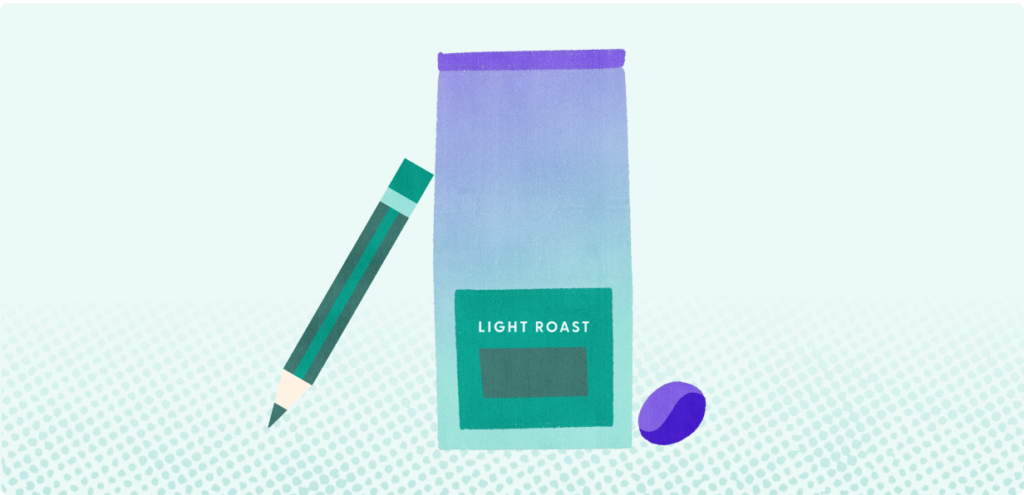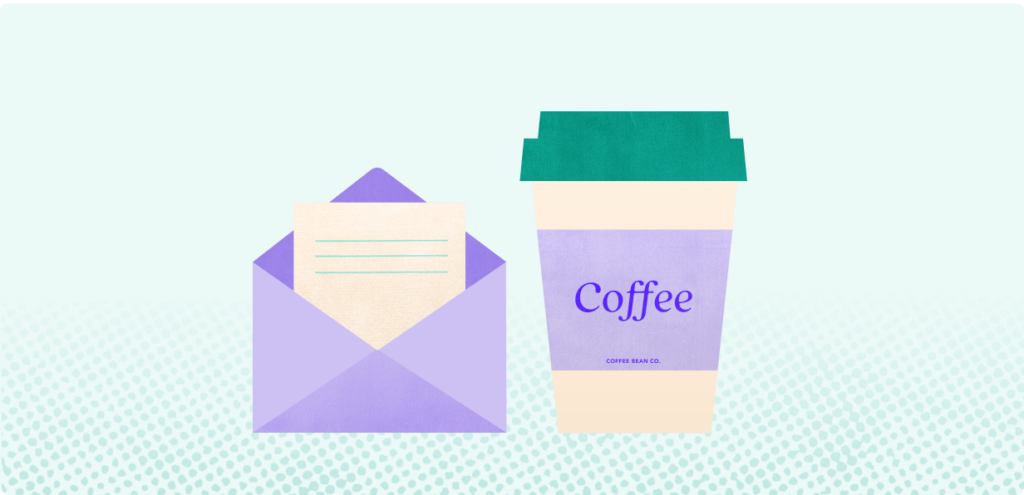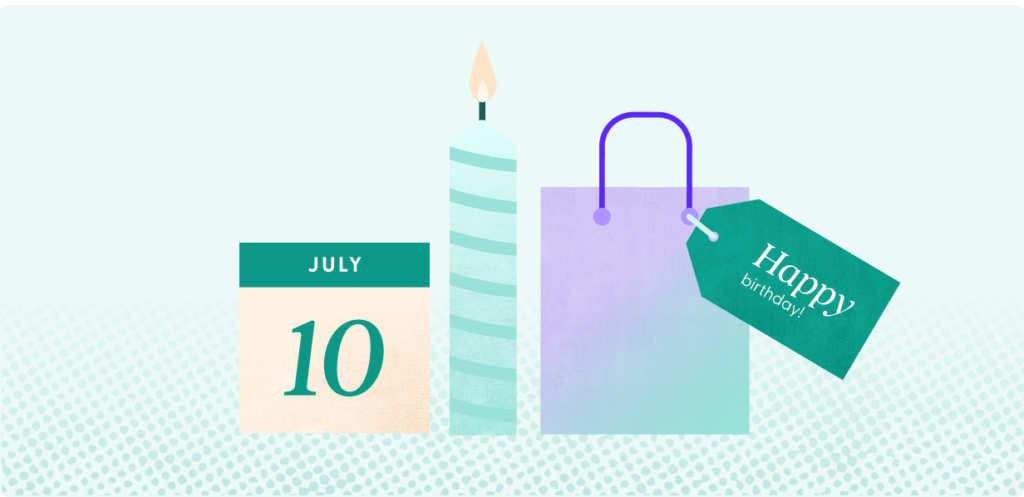Surprise, delight, and the modern tech stack
How to plan moments of unexpected joy that drive LTV
Introduction
Why surprise & delight?
A welcome interruption
To cut through the predictable motions of daily life, there’s no more powerful tool than surprise. By interrupting the increasingly routine and transactional patterns of online shopping, brands can instantly capture consumers’ ever-shortening attention spans.
But when paired with another key element—delight—surprise can take on even greater impact. Together, surprise and delight have the power to not only differentiate, but also humanize brands.
Ultimately, this can transform a merchant from a retailer to a trusted friend, resulting in true customer loyalty that builds retention and LTV. In fact, research shows that shoppers who are emotionally connected to a brand have 306% higher LTV1 than customers who are simply satisfied with the brand.
Surprise and delight marketing is both an art and a science. Like the act of thoughtful gift-giving, it requires deep empathy and creativity to reach customers with the benefits that make them feel most valued.
Striking the right balance relies heavily on robust analytics, automations, and other technical solutions to happen effectively and at scale. This means that the providers you choose have an enormous impact on your ability to successfully reach your customers at the right place and right time with scalability, precision, and efficiency.
Use this guide to:
- Understand how surprise and delight marketing works
- Discover technical best practices for surprise and delight at scale
- Gain inspiration to surprise and delight your customers
- Learn how to surprise and delight shoppers with Recharge
Section I
The elements of surprise & delight
Successful surprise and delight marketing relies on three main components: good timing, no-strings-attached value, and a personal touch.
Strike the right balance of all three, and the effect is powerful—humanizing brands, strengthening customer relationships, and building true loyalty in the form of higher LTV, reduced churn, organic referrals, and more.

Good timing: Surprise
Research shows that surprise is addictive2 and has the power to change behaviors and amplify emotions—making it an incredibly valuable marketing tactic. In customer relationships, surprise most often shows up in terms of timing.
When brands can defy expectations with unexpected yet positive experiences, they capture customers’ attention, increase engagement, and create excitement. The challenge: identifying the ideal moments to surprise, and finding ways to automate the process for large and often nuanced customer bases.

No-strings-attached value: Delight
Research by McKinsey shows that 83% of customers expect personalization from brands in the form of content and experiences.3 In other words, personalization alone is no longer enough to win loyalty—it’s a requirement for meeting customer expectations.
What customers may not expect? Delivering that personalization and value with no strings attached. This is where delight comes in. By offering tailored rewards at no extra cost to the shopper, brands humanize themselves, showing how deeply they understand their customers and how invested they are in their satisfaction.

A personal touch: Communication
To close the loop with surprise and delight, communication is key. Not only does communication help convey the intentionality of any unexpected rewards a customer might receive—it also increases value by further humanizing the brand and providing another opportunity for personalization.
According to Salesforce, 66% of customers expect companies to understand their unique needs and expectations, yet that same percentage also says they’re generally treated like numbers.4 Your communication is a key way to defy these perceptions.
That communication could take the form of a handwritten note in a customer’s delivery, an email explaining a reward, or a thoughtful note in a CX chat. What’s most important is conveying care and empathy in ways that feel personal to the individual customer.
Section II
Best practices to surprise & delight customers at scale
Like gift-giving with friends, the creative possibilities for surprise and delight marketing are endless, and depend almost entirely on the giver and recipient.
In a marketing context, these efforts might seem unexpected for the shopper—however, they involve careful consideration and automation by the merchants.
The greatest challenge for merchants is often in striking the right balance between technical practices and creative engagement tactics to surprise and delight customers at scale. Below, we’ll dive into five of these key best practices.
Surprise and delight hinges on good timing. Therefore, the first step for merchants is to identify their customers’ “universal milestones”—common moments where surprise and delight will be most effective.
These can be organized around different calendar events, like birthdays, anniversaries, and holidays. They can also rely on customer actions, such as initial activation, certain number of orders, churn risk milestones, and cancellation.
The “art” component of surprise and delight relies on empathy. What emotions might your customer base be going through when they reach these milestones, and how might those be unique to your specific products or mission? This can not only help you determine any gifts you provide customers, but also inform your approach.
For example, if you represent a dog food company, a customer might cancel because their pet passed away. Meeting their feelings of grief and overwhelm with compassion and care is crucial for providing what they need in a difficult time.
Once you gain a deep understanding of the milestones you want to target, it’s time to assess how easily you can pinpoint these specific moments for your entire customer base. It’s also a key time to determine which of these milestones you can scale versus which might require more manual intervention.
From there, identify if this data already exists in your analytics tools, or if you need to set up mechanisms to collect it—either through your storefront or via a quiz flow.
Often, you’ll want to use a combination of both qualitative and quantitative customer data for maximum impact.
For example, let’s say you want to target customers who are at risk of churning, and you have access to a customer retention dashboard that shows you the specific month customers are dropping off. To gain more information about why they’re churning, you might launch a simple survey around this milestone to help inform what would compel customers to stay.
Your customers’ desires are constantly changing and evolving, as are your product offerings. Therefore, it’s critical to make A/B testing and iterating on your campaigns a constant process to continually hone your efforts and provide the most valuable possible experiences.
Monitor the results over time and keep refining—the testing work is never done. To surprise and delight at scale, it’s key to automate this testing and iteration. This way, you can offer meaningful experiences to a broader group of your customers for maximum impact.
Without proper communication, even the best-laid surprise and delight plans can go awry. Whether it takes the form of a thoughtful email or a handwritten note, merchant communication can close the loop on why a gift was sent, prevent confusion, provide opportunities to lean into your brand voice, and express appreciation.
Of course, streamlining your communication is critical when applying this tactic at scale. Ensure that your tech stack is set up so that you can easily reach customers on the right channels without having to reinvent the wheel with every message.
Section III
Surprise & delight inspiration
How might a successful surprise and delight campaign work for your brand? To help you visualize the different forms your efforts could take, we’ve broken down the art of surprise and delight into three archetypes.
Discover how each reaches their unique audience with a human touch and valuable benefits, as well as their opportunities for automation.
Visualize surprise and delight for your brand

Coffee Bean Co. launches a campaign to spontaneously send a segment of their customer base—teachers and college students—surprise gift boxes with coffee-related items. Each delivery contains a note thanking the customer for their business and wishing them well during their busy season.

The Customer Support team at Coffee Bean Co. sends a personalized note and complimentary, one-time gift of a reusable coffee thermos to a customer to express appreciation for their patience after an order was accidentally delayed by several weeks.

When a customer signs up for Coffee Bean Co.’s loyalty program, they are asked to provide their birthday to receive a special surprise. When a customer’s birthday comes around later in the year, they will have likely forgotten that they will receive a free gift, creating a sense of delight.
Section IV
How can you surprise & delight with Recharge?
Surprising and delighting your customers holistically and at scale depends on your tech stack. That’s why Recharge provides all the tools merchants need to deliver surprising and delightful experiences through built-in products and features.
1. Surprise customers with exclusive access & benefits
Create strong brand connections and deliver personalized benefits that increase retention, LTV, and brand affinity. With Recharge’s Loyalty offering, you can give customers the rewards they actually want—unlike traditional points-based loyalty programs.
With Loyalty, you can:
- Offer subscriber-only benefits like recurring discounts or free shipping
- Launch valuable paid membership programs
- Incentivize customers with cash back instead of discount codes
2. Quickly test, iterate & optimize your tactics
Surprise and delight your subscribers with tailored experiences that give them exactly what they want, when they want it. With Recharge’s Flows offering, you can quickly deploy A/B tests to set up targeted journeys based on endless conditions and optimize every touchpoint in your shopper journey.
Create your own custom Flows for specific use cases, or leverage Recharge’s templates—including our Surprise and Delight Flow—to jump into action for several key scenarios:
- Encourage customers to buy more and stay longer with exclusive perks and incentives
- Offer specific cohorts discounted upsells that make them feel most valued by your brand
- Reduce active churn with positive experiences and feedback collection
3. Personalize your offers & timing
To tailor your offers in compelling ways, you need actionable insights about your customers. Recharge’s in-house analytics allow you to gain valuable takeaways on your shoppers and products, which you can then use to make enticing offers at the most opportune times.
4. Create custom messages that reward customer actions
In surprise and delight marketing, communication is key. That’s where Recharge’s Klaviyo integration comes in. Create automated Klaviyo email flows using Recharge data to identify and reward key customer actions—like gifting an order instead of skipping it.
You can also launch campaigns that include our embedded Quick Action links to offer free gifts or discount codes when customers hit certain milestones, like completing their third order with you.
About this guide
Sources
1. Leveraging the Value of Emotional Connection for Retailers (Motista)
2. Surprise Is Still the Most Powerful Marketing Tool (Harvard Business Review)
3. Coping with the big switch: How paid loyalty programs can help bring consumers back to your brand (McKinsey & Company)
4. What Are Customers Expectations, and How Have They Changed? (Salesforce)
Contributors
Leadership: Randi Fuchs
Strategic Oversight: Erin Carey, Nalin Chuapetcharaposon, Sanjot Harsoor
Copy: Sara Heegaard
Design & Development: Emma Overholt, Kyle McAllister
Art Direction: Raul Villalobos